Related Research Articles

Spacelab was a reusable laboratory developed by European Space Agency (ESA) and used on certain spaceflights flown by the Space Shuttle. The laboratory comprised multiple components, including a pressurized module, an unpressurized carrier, and other related hardware housed in the Shuttle's cargo bay. The components were arranged in various configurations to meet the needs of each spaceflight.
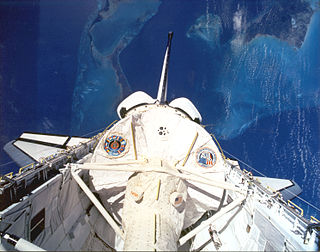
STS-50 was a NASA Space Shuttle mission, the 12th mission of the Columbia orbiter. Columbia landed at Kennedy Space Center for the first time ever due to bad weather at Edwards Air Force Base caused by the remnants of Hurricane Darby.
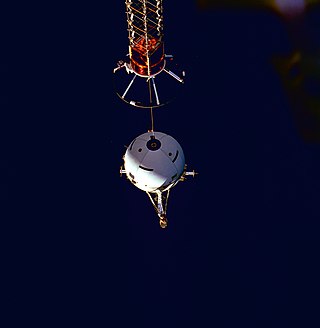
STS-75 was a 1996 NASA Space Shuttle mission, the 19th mission of the Columbia orbiter.

STS-93 in 1999 marked the 95th launch of the Space Shuttle, the 26th launch of Columbia, and the 21st night launch of a Space Shuttle. Eileen Collins became the first female shuttle Commander on this flight. Its primary mission was to launch the Chandra X-ray Observatory, the heaviest payload ever carried by the Space Shuttle system, at 22,780 kilograms (50,222 lb).

STS-61-A was the 22nd mission of NASA's Space Shuttle program. It was a scientific Spacelab mission, funded and directed by West Germany – hence the non-NASA designation of D-1. STS-61-A was the ninth and last successful flight of Space Shuttle Challenger before the disaster. STS-61-A holds the current record for the largest crew—eight people—aboard any single spacecraft for the entire period from launch to landing.

STS-41 was the 36th Space Shuttle mission and the eleventh mission of the Space Shuttle Discovery. The four-day mission had a primary objective of launching the Ulysses probe as part of the "International Solar Polar Mission" (ISPM).
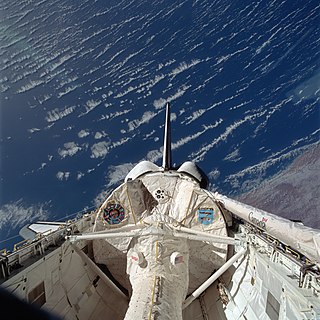
STS-47 was NASA's 50th Space Shuttle mission of the program, as well as the second mission of the Space Shuttle Endeavour. The mission mainly involved conducting experiments in life and material sciences inside Spacelab-J, a collaborative laboratory inside the shuttle's payload bay sponsored by NASA and the National Space Development Agency of Japan (NASDA). This mission carried Mamoru Mohri, the first Japanese astronaut aboard the shuttle, Mae Jemison, the first African-American woman to go to space, and the only married couple to fly together on the shuttle, Mark C. Lee and Jan Davis, which had been against NASA policy prior to this mission.
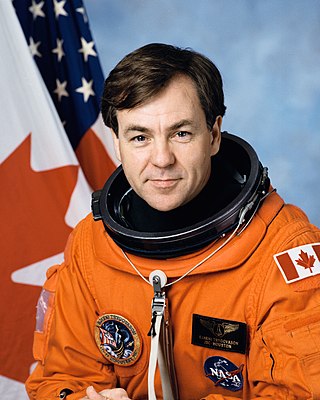
Bjarni Valdimar Tryggvason was an Icelandic-born Canadian engineer and a NRC/CSA astronaut. He served as a Payload Specialist on Space Shuttle mission STS-85 in 1997, a 12-day mission to study changes in the Earth's atmosphere. Bjarni is the first and only Icelandic astronaut.

STS-62 was a Space Shuttle program mission flown aboard Space ShuttleColumbia. The primary payloads were the USMP-02 microgravity experiments package and the OAST-2 engineering and technology payload, both in the orbiter's cargo bay. The two-week mission also featured a number of biomedical experiments focusing on the effects of long duration spaceflight. The landing was chronicled by the 1994 Discovery Channel special about the Space Shuttle program and served as the show's opening. A C.F. Martin backpacker guitar was also flown aboard Columbia during the mission.

STS-65 was a Space Shuttle program mission of Columbia launched from Kennedy Space Center, Florida, 8 July 1994. The flight carried a crew of 7 and was commanded by Robert D. Cabana who would go on later to lead the Kennedy Space Center. STS-65 was an international science mission that carried the International Microgravity Laboratory (IML-2) on a 15-day mission which featured the first animals to conceive and bear offspring in space. Columbia returned to the Kennedy Space Center on 23 July 1994.
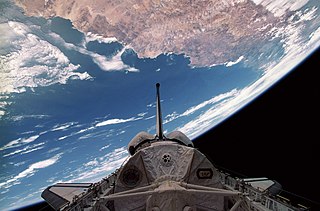
STS-73 was a Space Shuttle program mission, during October–November 1995, on board the Space Shuttle Columbia. The mission was the second mission for the United States Microgravity Laboratory. The crew, who spent 16 days in space, were broken up into 2 teams, the red team and the blue team. The mission also included several Detailed Test Objectives or DTO's.

STS-83 was a NASA Space Shuttle mission flown by Columbia. It was a science research mission that achieved orbit successfully, but the planned duration was a failure due to a technical problem with a fuel cell that resulted in the abort of the 15 day duration. Columbia returned to Earth just shy of four days. The mission was re-flown as STS-94 with the same crew later that year.

STS-94 was a mission of the United States Space Shuttle Columbia, launched on 1 July 1997.

STS-87 was a Space Shuttle mission launched from Launch Complex 39B of the Kennedy Space Center on 19 November 1997. It was the 88th flight of the Space Shuttle and the 24th flight of Columbia. The mission goals were to conduct experiments using the United States Microgravity Payload (USMP-4), conduct two EVAs, and deploy the SPARTAN-201 experiment. This mission marked the first time an EVA was performed from Columbia. EVAs from Columbia were originally planned for STS-5 in 1982 and STS-80 in 1996, but were canceled due to spacesuit and airlock problems, respectively. It also marked the first EVA conducted by a Japanese astronaut, Takao Doi.

Jeffrey Alan Hoffman is an American former NASA astronaut and currently a professor of aeronautics and astronautics at MIT.

Roger Keith Crouch is an American scientist and astronaut who flew as a payload specialist on two NASA Space Shuttle missions in 1997.

Dirk Dries David Damiaan, Viscount Frimout is an astrophysicist for the European Space Agency. He flew aboard NASA Space Shuttle mission STS-45 as a payload specialist, making him the first Belgian in space.

Don Leslie Lind was an American scientist, naval officer, aviator, and NASA astronaut. He graduated from the University of Utah with an undergraduate degree in physics in 1953. Following his military service obligation, he earned a PhD in high-energy nuclear physics from the University of California, Berkeley in 1964.

Donald Alan Thomas is an American engineer and a former NASA astronaut.

A crystal dendrite is a crystal that develops with a typical multi-branching form, resembling a fractal. The name comes from the Ancient Greek word δένδρον (déndron), which means "tree", since the crystal's structure resembles that of a tree. These crystals can be synthesised by using a supercooled pure liquid, however they are also quite common in nature. The most common crystals in nature exhibit dendritic growth are snowflakes and frost on windows, but many minerals and metals can also be found in dendritic structures.
References
- ↑ "Transient Dendritic Solidification Experiment (TDSE)". NASA/Marshall Space Flight Center. July 7, 2000 – via Wayback Machine.
- ↑ Koss, Matthew B. (June 29, 2003). "How Science Brought Down the Shuttle". The New York Times. p. 13. Retrieved April 10, 2022– via nytimes.com.
- ↑ Shaw, Gwyneth K. (October 17, 2003). "Panel says NASA should abandon shuttle program". The Bradenton Herald . Bradenton, Florida. Knight Ridder. p. 7. Retrieved April 10, 2022– via newspapers.com.
- ↑ Koss, Matthew B. (April 28, 2008). "A thin envelope, a full life". The Boston Globe . p. 15. Retrieved April 10, 2022– via newspapers.com.
- ↑ "Matthew Koss". holycross.edu. Retrieved April 10, 2022.